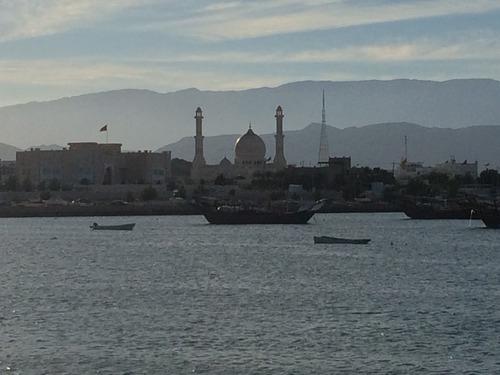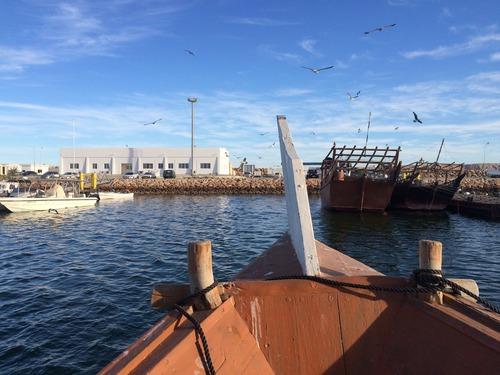Let’s get one thing straight: I am not a seafaring woman.
I have a healthy respect (read: fear) of the ocean, and my stomach has an unhealthy relationship with the rhythmic motion of waves. If I even look at a boat I get nauseous.
Related: Welcome to Oman — The 2015 “It” Destination

The Omani coastline (Photo: Kristina Cafarella)
Dramamine works sometimes, but it usually just ensures that I sleep whenever I am on a boat. This happens even on large cruise ships. But there are times when one has to brave the sea and boats — especially if one loves history and literature and was raised on stories from “The Seven Voyages of Sinbad the Sailor” and “One Thousand and One Nights.”
Related: The Burmese Boat Festival That Puts Mardi Gras to Shame

A dramatic seascape (Photo: Kristina Cafarella)
Make no mistake — while many associate the ancient Arab world with Bedouins and camels trekking across the desert dunes, this area’s history is just as much linked to the sea as it is the desert. Since 4500 B.C. people in the area have made their living on boats. From the 8th century on, Arab traders ruled the oceans in this part of the world, with Oman as the epicenter of activity. In fact, due to demand and the expansion of the sea trade, at one time Oman was split into two — half of it on the Arabian Peninsula, which is still the country we think of today — and the other half in Zanzibar, Africa.
Related: The Live “Stock” Market of Oman — It Moos!

Detail of a handcrafted boat, or dhow (Photo: Kristina Cafarella)

